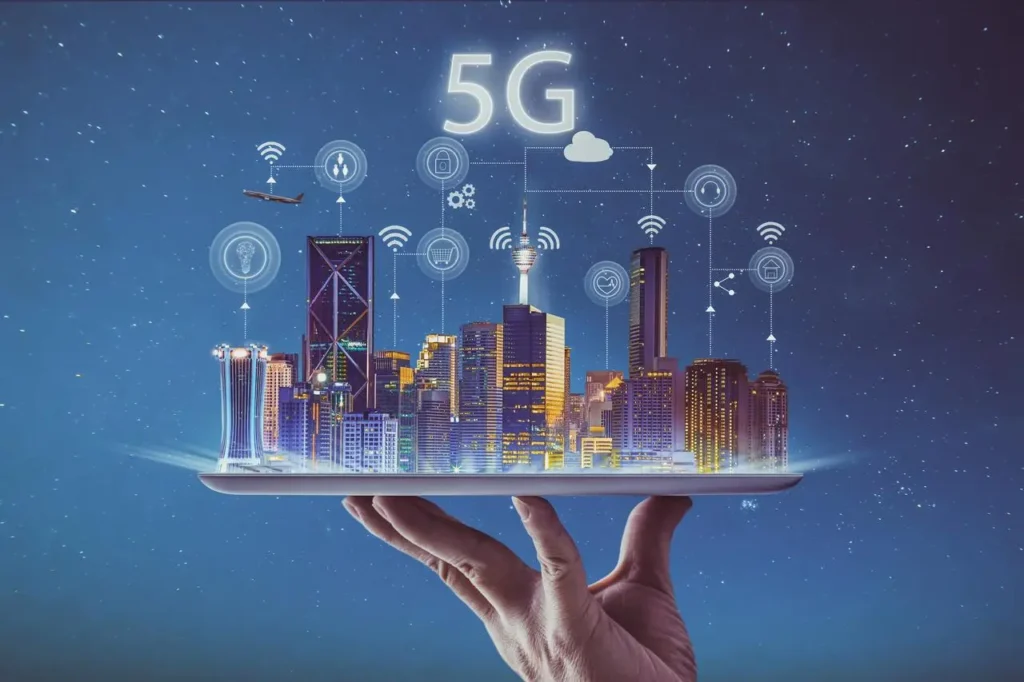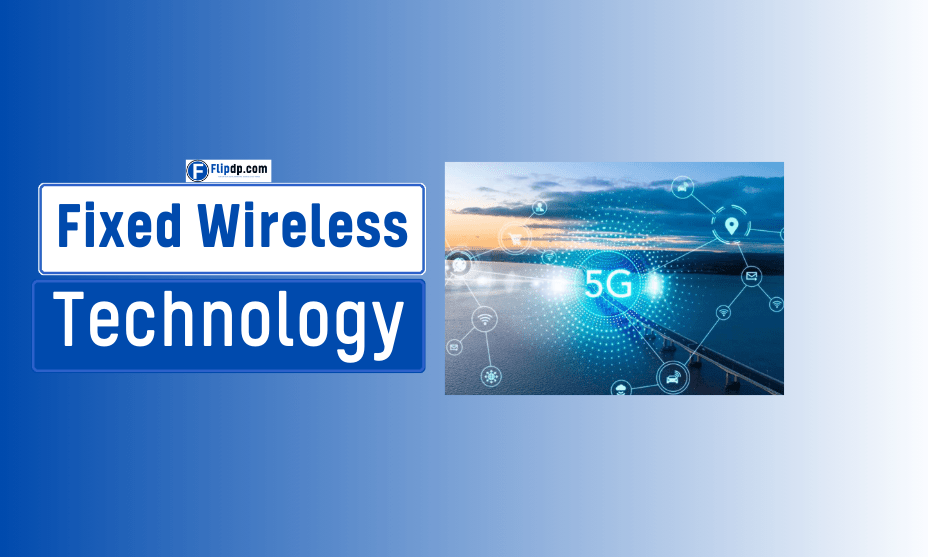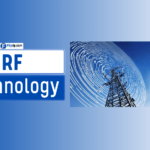What is Fixed Wireless Technology?
Definition
Fixed wireless technology refers to the delivery of internet and communication services to a specific location using wireless connections rather than traditional wired mediums like copper or fiber-optic cables. Unlike mobile wireless solutions that serve multiple users over a broad area, fixed wireless connections are dedicated to a single premise, such as a home or business, ensuring a stable and reliable connection.
How It Differs from Other Technologies
While mobile wireless technology (e.g., cellular networks) caters to a wide and dynamic user base, RF Technology is tailored for static endpoints. Additionally, compared to satellite internet, fixed wireless typically offers lower latency and higher bandwidth, making it a more suitable choice for applications requiring real-time data transmission.
How Fixed Wireless Technology Works

Basic Components
Fixed wireless systems consist of several key components:
- Base Station: A central hub that transmits and receives signals to and from multiple fixed wireless units.
- Fixed Wireless Unit (FWU): A receiver installed at the user’s location, connected to their router or modem.
- Antennas: Both the base station and FWU use directional or omni-directional antennas to facilitate signal transmission.
- Backhaul Connection: Links the base station to the broader internet infrastructure, often via fiber-optic cables or microwave links.
Transmission Process
- Signal Generation: The base station generates a wireless signal, modulated to carry data.
- Transmission: The signal is broadcast through the antenna to the fixed wireless unit at the user’s location.
- Reception: The FWU receives the signal, demodulates it, and passes the data to the user’s devices.
- Two-Way Communication: Data can flow both to and from the user, enabling interactive internet services.
Technology Standards
Fixed wireless technology leverages various standards to ensure compatibility and performance:
- WiMAX (Worldwide Interoperability for Microwave Access): An older standard once popular for fixed wireless applications.
- LTE (Long-Term Evolution): Widely used in 4G networks, offering higher speeds and improved reliability.
- 5G NR (New Radio): The latest standard, providing ultra-high speeds, low latency, and massive connectivity.
Advantages of Fixed Wireless Technology
High-Speed Internet Access
Fixed wireless can deliver internet speeds comparable to fiber-optic connections, often reaching gigabit levels. This makes it suitable for bandwidth-intensive applications such as video streaming, online gaming, and large data transfers.
Cost-Effective Deployment
Deploying fixed wireless infrastructure typically requires lower upfront investments compared to laying fiber or copper cables. This cost-efficiency is particularly beneficial in rural or underserved areas where traditional wired deployments are economically challenging.
Flexibility and Scalability
Fixed wireless systems are highly adaptable. They can be quickly deployed, scaled, or reconfigured to meet changing demands, making them ideal for businesses experiencing growth or areas experiencing population shifts.
Reliability and Performance
Modern fixed wireless solutions offer robust performance with minimal downtime. Advances in technology, such as MIMO (Multiple Input Multiple Output) and beamforming, enhance signal strength and reliability, even in adverse weather conditions.
Applications of Fixed Wireless Technology

Residential Broadband
For households in areas lacking high-speed wired options, fixed wireless provides a viable alternative, ensuring access to essential online services like streaming, remote work, and online education.
Business Connectivity
Businesses benefit from fixed wireless by accessing reliable internet for operations, cloud services, and communication without the delays associated with wired installations.
Rural and Remote Areas
Fixed wireless bridges the digital divide, offering high-speed internet to remote locations where laying cables is impractical or cost-prohibitive. This connectivity supports local economies, education, and healthcare services.
IoT and Smart Infrastructure
As the Internet of Things (IoT) expands, fixed wireless plays a crucial role in connecting smart devices and infrastructure, enabling real-time data exchange and automation in sectors like agriculture, manufacturing, and urban planning.
Fixed Wireless Technology vs. Traditional Wired Solutions
Comparison with Fiber Optics
Fiber optic connections are renowned for their high speeds and reliability. However, they require significant infrastructure investment. Fixed wireless offers similar performance levels with quicker deployment times and lower costs, especially in areas where fiber deployment is challenging.
Comparison with DSL and Cable
DSL (Digital Subscriber Line) and cable internet are widely available but often suffer from speed limitations and reduced performance over long distances. Fixed wireless can provide higher speeds with more consistent performance, particularly in environments where wired infrastructure is outdated or overburdened.
Comparison with Satellite Internet
While satellite internet can reach virtually any location, it typically experiences higher latency and lower bandwidth compared to fixed wireless. Fixed wireless provides faster, more stable connections suitable for interactive applications, making it a preferable choice where feasible.
Challenges and Limitations
Line-of-Sight Requirements
Fixed wireless often requires a clear line of sight between the base station and the FWU. Physical obstructions like buildings, trees, or terrain can interfere with signal transmission, necessitating careful site planning and potential infrastructure adjustments.
Interference and Signal Quality
Wireless signals can be susceptible to interference from other electronic devices, weather conditions, and environmental factors. Ensuring proper frequency management and using advanced technologies can mitigate these issues but may require additional investment.
Bandwidth Constraints
While fixed wireless can offer high speeds, network congestion and limited spectrum availability can impact performance. Efficient spectrum management and infrastructure upgrades are essential to maintain optimal bandwidth.
Regulatory and Licensing Issues
Operating fixed wireless systems often involves navigating complex regulatory landscapes, including spectrum licensing and compliance with local telecommunications regulations. This can pose barriers to deployment, particularly in regions with stringent regulatory frameworks.
Future of Fixed Wireless Technology
5G and Beyond

The advent of 5G technology has significantly enhanced the capabilities of fixed wireless, offering ultra-high speeds, low latency, and increased capacity. Future developments, including 6G, promise even greater advancements, further solidifying fixed wireless’s role in global connectivity.
Integration with Other Technologies
Fixed wireless is increasingly integrated with other technologies like edge computing and smart city infrastructure. This synergy enhances data processing capabilities, reduces latency, and supports the burgeoning IoT ecosystem.
Market Trends and Growth Projections
The fixed wireless market is poised for substantial growth, driven by increasing demand for high-speed internet, the expansion of 5G networks, and the need for cost-effective connectivity solutions. Analysts predict a compound annual growth rate (CAGR) of over 10% in the coming years, reflecting its growing significance.
Common Misconceptions About Fixed Wireless Technology
It’s Slower than Wired Connections
A prevalent myth is that fixed wireless cannot match the speeds of wired connections like fiber. In reality, modern fixed wireless systems can deliver comparable or even superior speeds, particularly with advancements in 5G technology.
It’s Only Suitable for Rural Areas
While fixed wireless is indeed beneficial for rural and remote locations, it is equally valuable in urban and suburban settings. Businesses, multi-dwelling units, and areas with high infrastructure costs can all leverage fixed wireless for efficient connectivity.
It’s Unreliable
Concerns about reliability stem from older wireless technologies or poorly implemented systems. Contemporary fixed wireless solutions, equipped with advanced technologies and robust infrastructure, offer reliable and stable connections suitable for critical applications.
Practical Advice for Implementing Fixed Wireless Technology
Choosing the Right Provider
Selecting a reputable provider with a proven track record and robust infrastructure is crucial. Consider factors such as coverage area, service reliability, customer support, and scalability options.
Understanding Coverage and Capacity
Assess the coverage area and capacity requirements to ensure the chosen fixed wireless solution can meet current and future demands. This includes evaluating the number of users, types of applications, and necessary bandwidth.
Ensuring Proper Installation
Proper installation is vital for optimal performance. This includes positioning antennas for clear line-of-sight, configuring network settings appropriately, and adhering to best practices for security and maintenance.
Maintaining and Troubleshooting
Regular maintenance and prompt troubleshooting can prevent downtime and ensure sustained performance. Implementing monitoring tools and having a responsive support system in place are essential components of effective fixed wireless management.
Conclusion
Fixed wireless technology stands as a transformative force in the telecommunications landscape, offering a versatile, cost-effective, and high-performance alternative to traditional wired solutions.
Its ability to provide reliable, high-speed internet access to diverse environments—from bustling urban centers to remote rural areas—underscores its vital role in bridging the digital divide and supporting the ever-evolving demands of the modern world.
As advancements in wireless standards like 5G continue to enhance its capabilities, fixed wireless is poised to become even more integral to our connectivity infrastructure.
By addressing challenges such as line-of-sight requirements and spectrum management, and leveraging its inherent advantages, fixed wireless technology is set to shape the future of internet access, driving innovation and fostering inclusive digital growth.
For individuals and businesses alike, understanding the intricacies of fixed wireless technology is essential in making informed decisions about their connectivity needs.
As the world becomes more interconnected, fixed wireless technology will undoubtedly play a pivotal role in enabling seamless communication, enhancing productivity, and supporting the digital transformation across various sectors.
FAQs, Fixed Wireless Technology
1. What is Fixed Wireless Technology?
Fixed Wireless Technology refers to a method of delivering broadband internet access to a fixed location (such as a home or business) using wireless communication rather than traditional wired connections like fiber or copper. It uses radio signals to transmit data between a base station and a receiver installed at the user’s location.
2. How does Fixed Wireless Technology work?
Fixed Wireless Technology works by establishing a direct line of sight connection between a base station (usually located on a tower or rooftop) and a fixed receiver. The base station transmits radio signals that carry data, which is then received by the antenna at the user’s location. This connection allows for high-speed internet access without the need for physical cables.
3. What are the advantages of Fixed Wireless Technology?
Some key advantages include:
Quick Deployment: It can be set up faster than traditional wired connections, especially in remote or rural areas.
Cost-Effectiveness: Reduced installation and maintenance costs compared to extensive cabling.
Mobility: While primarily fixed, some systems offer portability for use in different locations.
Scalability: Easier to expand and upgrade as demand increases.
4. What are the limitations of Fixed Wireless Technology?
Limitations include:
Line of Sight Requirements: Obstacles such as buildings, trees, or hills can interfere with the signal.
Distance Constraints: The performance can degrade with distance from the base station.
Weather Sensitivity: Adverse weather conditions can affect signal quality and reliability.
5. Is Fixed Wireless Technology suitable for rural areas?
Yes, Fixed Wireless Technology is particularly beneficial for rural areas where traditional wired infrastructure is lacking or too costly to deploy. It provides an alternative solution for delivering broadband internet access to underserved communities.











